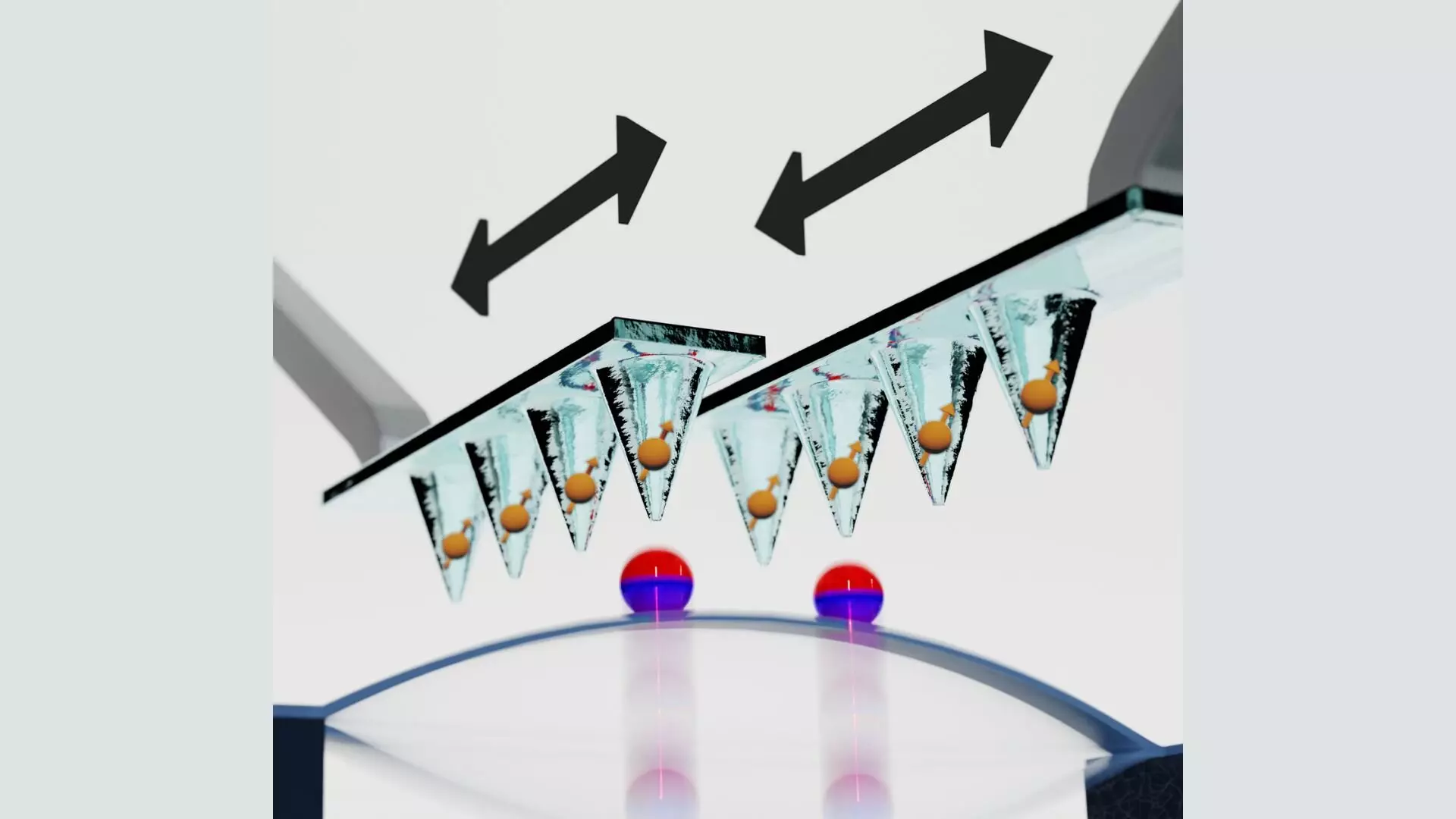Quantum computing stands at the frontier of technological advancement, promising exponential improvements in processing power and efficiency. Central to this revolutionary field are qubits, the fundamental units of quantum information, which must exhibit long coherence times, stability, and scalability in order to realize practical quantum systems. Recent research led by Frankie Fung and his team at Harvard University presents a noteworthy advancement in this arena by proposing a novel method that synergizes solid-state spin qubits with nanomechanical resonators. This coupling not only addresses inherent limitations of current quantum architectures but also enhances the potential for extensive quantum processors.
The Limitations of Traditional Solid-State Spin Qubits
Solid-state spin qubits, which include nitrogen-vacancy (NV) centers in diamonds, have emerged as promising candidates due to their impressive coherence times. However, their scalability is significantly hindered by the short-range interactions that arise from magnetic dipolar coupling. Such interactions, limited to mere tens of nanometers, pose challenges when attempting to control large arrays of qubits required for complex calculations. The intricate dance of maintaining coherence while ensuring scalability is where the proposed architecture shines.
Fung emphasizes that conventional quantum registers reliant on magnetic dipolar interactions can only function effectively in small structures, thus severely restricting their operational range. This makes the transition from small-scale experimental setups to larger, practical applications a daunting obstacle. It is here that nanomechanical resonators present a creative and groundbreaking solution, enabling qubit interactions that transcend the limits of proximity.
The Innovative Architecture: Merging Spin Qubits with Nanomechanical Resonators
This groundbreaking research proposes a strategy in which nanomechanical resonators serve as mediating agents for qubit interactions. By positioning individual NV centers atop precise scanning probe tips that can traverse the surface of a nanomechanical resonator, the researchers establish a flexible framework for building quantum systems. This innovative architecture effectively converts short-range interactions into long-range connectivity, a critical leap towards scalable quantum processors.
The resonators, oscillating at nanoscales, can be finely tuned to achieve high-frequency responses, making them sensitive to minute external forces and magnetic fields. Such precision creates opportunities for non-local interactions among qubits, a key feature for entangled state creation—an essential element for quantum information processing. Instead of relying solely on direct magnetic interactions, this layered approach allows for a more nuanced manipulation of qubit states, thereby significantly broadening the potential for quantum computing applications.
The Advantages of Nitrogen-Vacancy Centers
At the heart of this proposed system are NV centers, which embed unique optical characteristics. These centers exhibit remarkable stability due to their minimal interaction with the external environment, affording them long coherence times that are crucial for reliable quantum operations. The diamond structure itself enhances this stability, while the introduction of a nitrogen atom and a vacancy creates the necessary spin states for qubits.
Moreover, these NV centers demonstrate high sensitivity to magnetic fields, enabling precise control over their quantum states. The researchers have also devised a method by which the diamond nanopillar acts as a waveguide, thus minimizing the power needed to excite the NV centers with laser light. This efficient method of excitation not only simplifies the experimental setup but also enhances the overall functionality of the quantum system.
The Quest for Scalable Quantum Systems
An essential aspect of this research is the ability to program connectivity between qubits. By maneuvering scanning probe tips over the mechanical resonator, selective interactions can be facilitated among the NV centers. This flexibility introduces the potential for dynamic quantum systems that can be reconfigured according to the computational requirements. As Fung articulately puts it, this proposed architecture allows researchers to craft specific qubit interactions in real-time, thereby expanding the horizons of what is computationally feasible.
Preliminary experiments have already showcased the capability of retaining coherent information during transport across the mechanical resonator, further substantiating the practical application of this system. While the current quality factor of the resonator is commendable—achieving around a million at low temperatures—there lies a vast potential for future improvements to enhance the system’s efficacy even further.
Looking Ahead: Integrating Optical Methods and Hybridization
The researchers remain optimistic about enhancing the design by introducing optical cavities alongside the nanomechanical resonators. Such integration promises not only to measure mechanical motion with amplified precision but also to explore the potential of transferring information between different quantum mediums. This endeavor will pave the path towards hybrid quantum systems that exploit the unique advantages of varying qubit types while minimizing their inherent limitations.
The implications of effectively utilizing nanomechanical resonators as intermediaries hold immense promise. The ability to facilitate interactions across diverse qubit types within integrated quantum circuits could revolutionize data processing capabilities. By converging electrical, optical, and mechanical components, the fusion of these technologies may offer unprecedented access to long-range connectivity and greater computational efficiencies.
The study by Fung and his team opens new avenues in the quest for functional quantum computers by tackling the dual challenges of coherence and scalability head-on. As we navigate this compelling frontier of quantum technology, the intertwining of quantum mechanics with mechanical resonators stands to redefine the future of information processing.


Leave a Reply